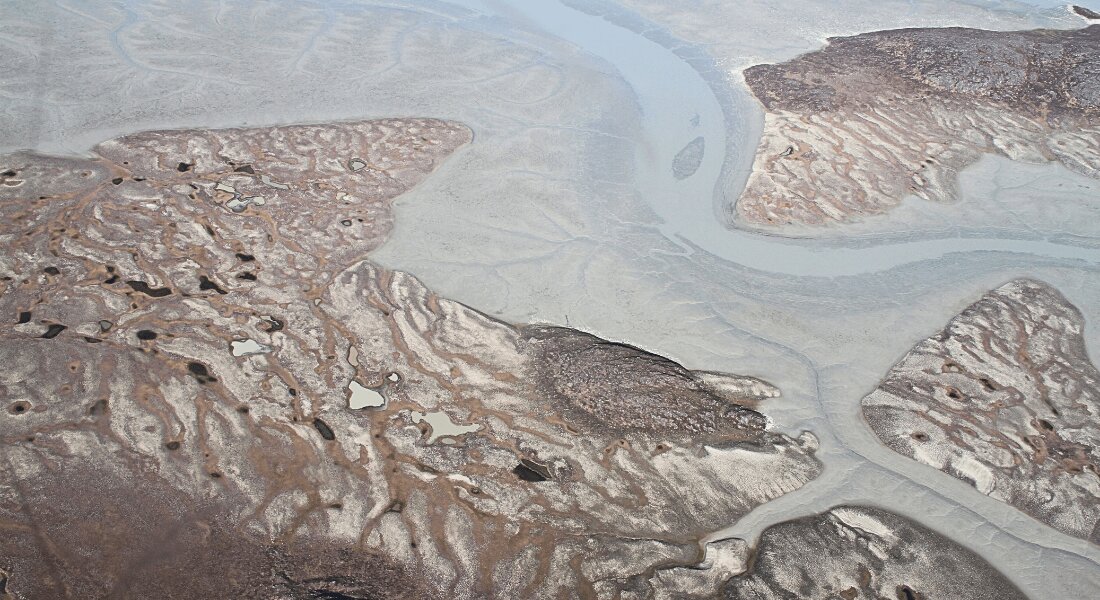
Climate change is having an impact in every ecosystem, from equator to pole and from ocean to mountain.
“THE four horsemen of the apocalypse”: that was the disparaging appraisal by Richard Tol of the University of Sussex of a report published in Yokohama on March 31st by the Intergovernmental Panel on Climate Change (IPCC), a group of scientists (including Dr Tol) who provide governments round the world with mainstream scientific guidance on the climate. Every six or so years, the IPCC produces a monster three-part encyclopedia; the first instalment of its most recent assessment came out last September and argued that climate change was speeding up, even if global surface temperatures were flat. The new tranche looks at the even more pertinent matter of how the climate is affecting the Earth’s ecosystems, the economy and peoples’ livelihoods.
Profoundly, is the headline answer, even though temperatures have warmed by only 0.8°C since 1800. They are likely to warm by at least twice that amount (and probably much more) by 2100. The report—the first since the collapse in 2009 of attempts to draw up a global treaty to reduce greenhouse-gas emissions—argues that climate change is having an impact in every ecosystem, from equator to pole and from ocean to mountain. It says that while there are a few benefits to a warmer climate, the overwhelming effects are negative and will get worse. It talks of “extreme weather events leading to breakdown of…critical services such as electricity, water supply and health and emergency services”; about a “risk of severe ill-health and disrupted livelihoods for large urban populations due to inland flooding”; and sounds the alarm about “the breakdown of food systems, linked to warming”.
Behind such headline scares, though, lies a subtler story, in which the effects of global warming vary a lot, in which climate change is one risk among many, and in which the damage—and the possibility of reducing it—depends as much on the other factors, such as health systems or rural development, as it does on global warming itself.
Compared with previous IPCC reports—the last was in 2007—the new one is confident about its assessment of damages, and more willing to attribute the harm to human influence on the climate. Take the rise in sea levels, which (pushed up by thermal expansion) has been increasing more in the 14 years of this century than it did from 1971 to 2000. The report reckons that, at current rates, average sea levels could rise by another half a metre or more by the end of the century, if greenhouse gases are not significantly curtailed. That is nothing but bad news for the people living in cities vulnerable to flooding from the sea: they now number 271m, and may increase to 345m by 2050, says the IPCC (some estimates put the figures higher). Nor are there any benefits from ocean acidification (caused by the absorption of carbon dioxide in seawater) which the report calls “a fundamental challenge to marine organisms and ecosystems”.
Equally stressed are terrestrial ecosystems facing sudden and irreversible change: climate “tipping points”. In the Arctic, for example, which is warming faster than any other large environment on earth, new shrubs and plants are invading formerly inhospitable areas. The vast boreal forests or Siberia and Canada are dying back faster than was expected in 2007, and may be more sensitive to warming than was then thought.
On the other hand, there are substantial areas where the influence of the climate is modest compared with other factors. Health is one. Pollution from factories adds to global warming and causes health problems directly: a new report by the World Health Organisation linked around 7m deaths to air pollution. In a warmer world, some diseases, such as malaria, will spread their range. Heat-related deaths will rise but cold-related ones will fall. In parts of the world where there are more cold-related than heat-related deaths, such as northern Europe, warmer temperatures could actually reduce the number of early deaths. By and large, the report says, the negative impacts will outweigh the positive ones but, for good or ill, the climate is not the dominant influence on mortality and morbidity. Public health and nutrition matter more.
Something similar is true for civil conflicts. Poverty and economic shocks help cause conflicts and are themselves influenced by climate change. Global warming can bring about changes in land use, reduce water supplies, and push up food prices, all of which contribute to riots (arguably, all this happened in Darfur). But it is hard to show that climate change has had a direct impact on levels or patterns of violence. If anything, it is the other way around: conflict reduces peoples’ ability to cope with climate change by, for example, laying mines in farmland. Surprisingly, global warming does not seem to be the culprit in most extinctions, either. With the exception of some frog species in Central America, no recent extinctions have been attributed to climate change.
So climate change has been powerful (in the oceans) and secondary (in health). But there is a third category: areas where the climate has had a large distributional effect, which may be good or bad, but usually appears to be negative. Fish are the most mobile of creatures and as the seas warm, marine animals and plants follow the cooler waters, migrating from the tropics to temperate latitudes. Benthic (bottom-feeding) algae are moving polewards at a rate of 10km per decade; phytoplankton are moving at over 400km a decade. The result, says the report, is that by 2055, fish yields in temperate latitudes could be 30%-70% higher than they were in 2005 (assuming there are any fish left by then) whereas the tropical fish yield will fall 40-60%. A similar distributional change, the scientists argue, is affecting the hydrological cycle: the rate at which groundwater is recharged is likely to increase in temperate climes and fall in tropical ones, leading to further drying of the soil in the dry tropics.
The most important distributional change, the IPCC reckons, concerns food, especially cereal crops.
The Latest on: Climate change
[google_news title=”” keyword=”climate change” num_posts=”10″ blurb_length=”0″ show_thumb=”left”]
via Google News
The Latest on: Climate change
- Government of Canada Releases New Report Showing the Impacts of Climate Change and Necessity of Indigenous-Led Climate Change Adaptationon May 7, 2024 at 9:30 pm
In recent years, Canada has increasingly faced severe impacts of climate change, including higher temperatures, shifting rainfall patterns, extreme weather events and rising sea levels. Climate change ...
- Climate change: World's oceans suffer from record-breaking year of heaton May 7, 2024 at 6:59 pm
Fuelled by climate change, the world's oceans have broken temperature records every single day over the past year, a BBC analysis finds. Nearly 50 days have smashed existing highs for the time of year ...
- Vermont passes bill to charge fossil fuel companies for damage from climate changeon May 7, 2024 at 5:11 pm
The legislation — the first of its kind in the U.S. — would require companies with high emissions to help pay for destruction caused by climate-fueled extreme weather.
- Climate-Change Suits Proliferate: Industries Grapple With Collateral Damageon May 7, 2024 at 2:57 pm
As the number and severity of such suits increase, insurance coverage for climate litigation might become more difficult to obtain, Standard & Poors Global Ratings said.
- In South Africa, tiny primates could struggle to adapt to climate changeon May 7, 2024 at 1:59 pm
In the "sky islands" of the Soutpansberg Mountains of South Africa, two closely related species of primate jostle for space. One is the thick-tailed greater galago (Otolemur crassicaudatus), also ...
- Climate Change Is Pushing Animals Closer to Humans, With Potentially Catastrophic Consequenceson May 7, 2024 at 1:23 pm
All around the world, the climate crisis has species on the move. This widespread shuffling can push animals closer to humans, with potentially disastrous consequences. Overall, a growing body of ...
- As climate change amplifies urban flooding, here’s how communities can become ‘sponge cities’on May 7, 2024 at 12:04 pm
US cities are doing green infrastructure, but in bits and pieces. Today’s climate-driven floods require a much broader approach to create true sponge cities that are built to soak up water.
- Westview Climate Change Club hosts fashion show to promote sustainability among Gen Zon May 7, 2024 at 9:18 am
My favorite part was seeing it all come together. The realization that this is possible,” club co-founder Alanya Abou-Elamjd said.
- Death toll from floods in Brazil reaches 83, with climate change viewed as a major driveron May 7, 2024 at 6:51 am
With one Brazilian official decrying it as "the worst disaster" in his state's history, the recent floods in Rio Grande do Sul have claimed 83 lives at the time of this writing and scientists agree ...
- Tackling the methane climate change equationon May 7, 2024 at 6:34 am
Methane from agriculture is a huge factor in Earth's climate change problem. MIT has developed a new catalyst to take methane out of the equation. The idea is to render agriculture less harmful to the ...
via Bing News










